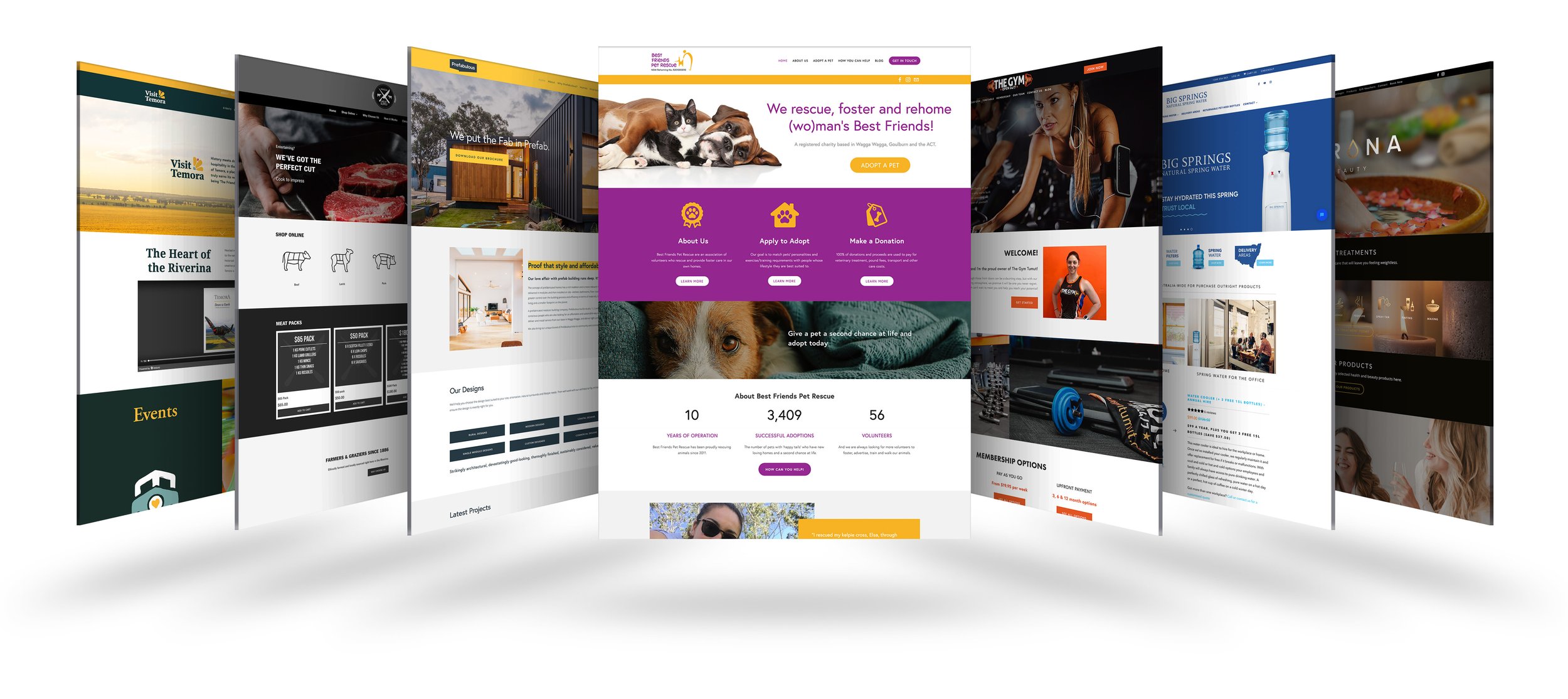Responsive Website Design for Seamless Viewing on Any Device
Responsive Website Design for Seamless Viewing on Any Device
Blog Article
Leading Tips for Producing an Impactful Internet Site Style That Transforms
To achieve this, one should think about a variety of elements, including recognizing the target audience, prioritizing customer experience, and optimizing for mobile systems. The calculated usage of engaging call-to-actions and a distinct aesthetic hierarchy plays an essential function in leading individuals through their journey.

Understand Your Target Target Market
Understanding your target audience is basic to efficient web site layout, as it lays the groundwork for developing an interesting individual experience. Determining that your users are, including their demographics, choices, and behaviors, makes it possible for developers to tailor the internet site's web content, format, and functionality to meet particular demands.
Performing thorough market research is critical in this procedure. Surveys, meetings, and analytics can provide important understandings into customer assumptions and pain factors. By assembling this information, developers can create customer identities that represent different sections of the target market, making certain that design choices are educated and pertinent.
Additionally, understanding the target market assists in picking ideal style elements such as color pattern, typography, and imagery that reverberate with customers. An internet site that talks directly to its audience fosters a sense of link and trust fund, motivating longer visits and greater conversion prices.
Inevitably, a user-centered approach to website design not only improves customer contentment yet also supports business goals by driving involvement and commitment. By focusing on the requirements and preferences of the target audience, a site can efficiently serve its objective and achieve wanted outcomes.
Prioritize Individual Experience
To enhance the total effectiveness of a site, prioritizing user experience (UX) is crucial (Website Design). A properly designed UX makes certain that site visitors can browse the site effortlessly, discover info quickly, and involve with content meaningfully. This brings about enhanced customer satisfaction and greater conversion rates
Begin by executing user-friendly navigating. Menus must be logically structured, allowing users to find essential areas of the site with very little effort. Consistency in style elements, such as color pattern and font styles, promotes experience, which is crucial for keeping customer interaction.
In addition, consider the filling rate of your web site. A hold-up of just a few secs can bring about significant drop-offs, as users are much less likely to wait for a slow-loading page. Streamlining images and maximizing code can boost performance and retain visitors.
In addition, quality in content presentation is crucial. Usage concise, appealing language and damage up message with visuals to enhance readability. By prioritizing individual experience, you not just create a much more pleasurable setting for visitors however additionally reinforce your brand name's reliability. Inevitably, a concentrate on UX is an investment in the long-term success of your site.
Maximize for Mobile Instruments
Maximizing for smart phones is crucial in today's digital landscape, where an increasing variety of users accessibility internet sites via mobile phones and tablet computers. A mobile-friendly layout not only why not try these out boosts individual experience but also plays a significant function in improving search engine rankings. To achieve this, it is important to adopt a responsive style that immediately adjusts to different screen dimensions and positionings.

Packing speed is an additional critical aspect; mobile customers are typically much less person and anticipate fast access to details. By prioritizing mobile optimization, you make certain that your internet site continues to be affordable and efficiently engages a broader target market.
Use Compelling Call-to-Actions
A website's efficiency usually depends upon its ability to direct site visitors toward desired actions, making compelling call-to-actions (CTAs) crucial elements of style. CTAs serve as the crucial points that guide users to involve with the site, whether that indicates buying, enrolling in an e-newsletter, or downloading a source.
To produce effective CTAs, clarity is extremely important. Usage succinct language that plainly connects the activity you want the individual to take. Phrases such as "Get Begun," "Subscribe Free," or "Shop Now" not just convey seriousness yet also remove ambiguity. The placement of CTAs is similarly essential; they must be tactically placed throughout the additional info web page to guarantee they are easily noticeable, particularly in high-traffic areas.
Moreover, the layout of CTAs ought to stand out without being interfering. Employ contrasting shades and clear fonts to guarantee they catch attention. Additionally, consider making use of visit directional hints, such as arrows or images, to guide users towards these buttons. By concentrating on these elements, businesses can considerably enhance user interaction, driving conversions and eventually accomplishing their website's goals.
Concentrate On Visual Power Structure
Effective internet site style counts greatly on a well-structured aesthetic power structure that guides users through material effortlessly. By organizing components in a manner that focuses on details, developers can improve user experience and facilitate decision-making. This includes utilizing dimension, shade, contrast, and spacing tactically to draw interest to one of the most vital components of a web page.
Using bigger fonts for headings and subheadings develops a clear distinction in between different sections, allowing users to scan content easily. Furthermore, using contrasting colors for switches and calls-to-action can record customer attention and motivate communication. Whitespace is one more crucial part; it stops mess and makes it possible for users to concentrate on crucial messages without interruptions.
Pictures and graphics need to match the text while likewise sticking to the established power structure, strengthening the general message (Website Design). Consistency in style aspects, such as color schemes and typography, more strengthens the aesthetic hierarchy, making navigation instinctive

Final Thought
In verdict, efficient site style necessitates a comprehensive understanding of the target audience, prioritization of customer experience, and mobile optimization. Ultimately, a well-executed internet site layout offers as a vital element in driving user actions and achieving organization purposes.
Report this page